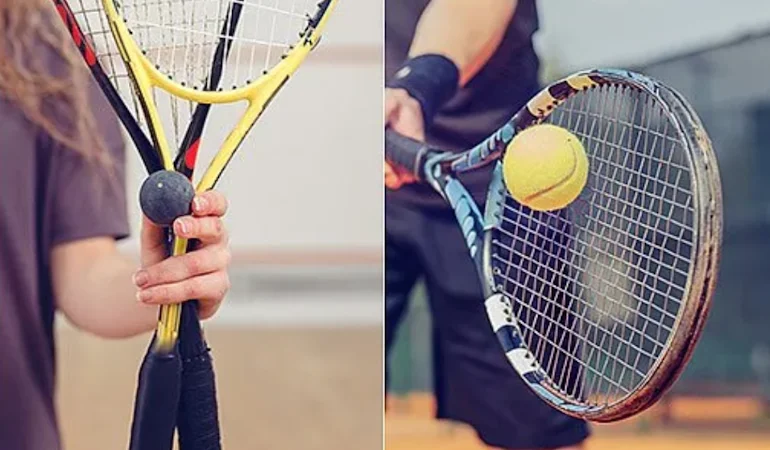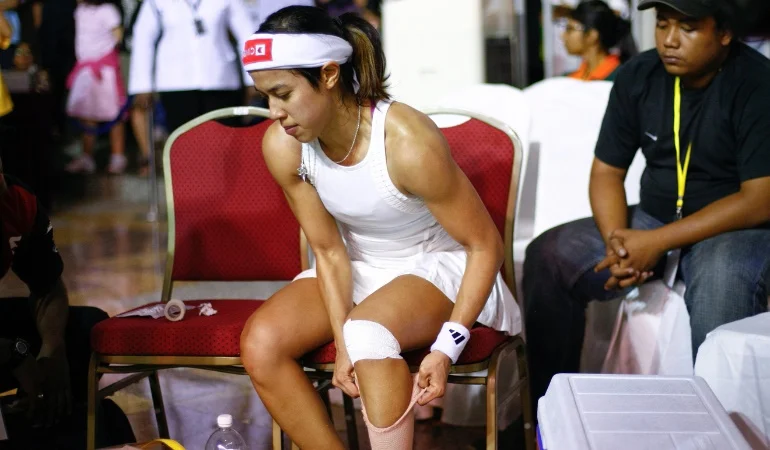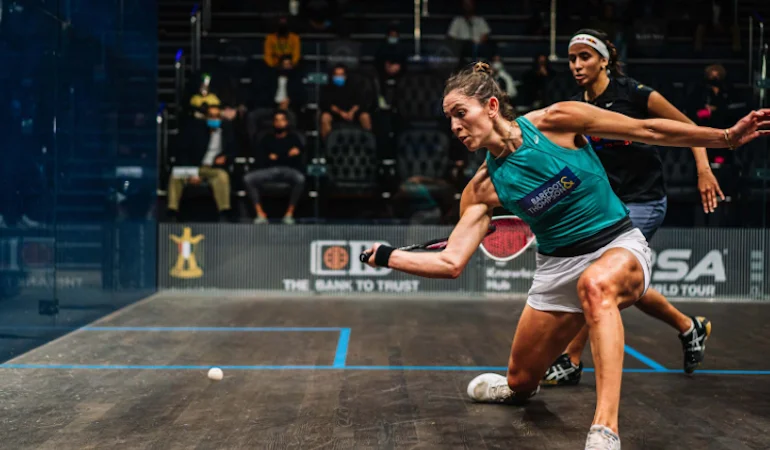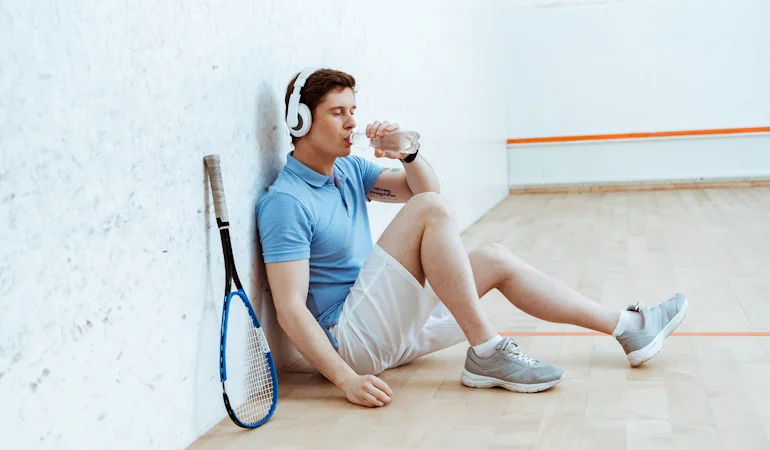Squash vs Tennis: A Comparison of Two Popular Racquet Sports

Both these sports require players to use a racquet to hit a small ball, but that's where their similarities end. Squash is known for its fast-paced nature and requires players to be extremely agile, while tennis is more focused on technique and precision.
In this article, we will compare these two popular racquet sports in terms of their gameplay, equipment used, health benefits, and popularity among players. Whether you're an avid fan or looking to pick up a new sport, this comparison will give you a better understanding of the nuances and unique features of squash and tennis.
What Is Squash?
Squash is a racquet sport that originated in England and was first played in the mid-19th century. It is played on an enclosed court with four walls, two of which have a small front wall with a tin at the bottom. The objective of the game is to hit the ball against one of the walls, making it impossible for your opponent to return it.
A squash match can be played as singles (one player on each side) or doubles (two players on each side). It requires players to have quick reflexes, good hand-eye coordination, and excellent cardiovascular endurance. The game is known for its intense rallies and fast-paced nature, making it physically demanding.
What Is Tennis?
Tennis is a sport that started in France in the 12th century. It’s played on a rectangular court divided by a net, and the goal is to hit the ball over the net into your opponent’s side, trying to make it hard for them to return.
Unlike squash, which is played in an enclosed space, tennis is played in an open court, allowing more variety in how players hit the ball. This adds a strategic element, where players need to think about shot placement and tactics. Tennis uses a larger, pressurized ball and a racquet with a round head and long handle. The game can be played on different surfaces like clay, grass, or hard courts, each affecting the ball's speed and bounce.
Health Benefits of Squash and Tennis
Both squash and tennis offer numerous health benefits that make them popular among fitness enthusiasts. As both sports involve continuous movement and use of multiple muscle groups, they provide an excellent cardiovascular workout that can help improve overall stamina and endurance.
Squash is known to be one of the most physically demanding sports, with players having to constantly move around the court and perform quick direction changes. This high-intensity activity can improve aerobic fitness, muscular strength, and even bone density.
On the other hand, tennis focuses more on technique and agility rather than endurance. The constant start-and-stop movements involved in playing tennis can help strengthen muscles in the arms, legs, and core. It also requires players to use different muscle groups for various shots, providing a full-body workout.
Moreover, both squash and tennis require mental focus and strategic thinking, which can help enhance cognitive skills such as decision-making and problem-solving. These sports also offer a great outlet for stress relief and can improve mood and overall well-being.
Main Differences Between Squash and Tennis
While squash and tennis may seem similar at first glance, there are several key differences between these two racquet sports. Here are some of the main differences:
Court
One of the most significant differences between squash and tennis is the court on which they are played. Squash courts are typically smaller, enclosed spaces with four walls, while tennis courts are larger and open-air. The dimensions of a standard squash court are 975 cm x 640 cm, with a total area of 624 square meters.
In comparison, a standard tennis court measures 78 feet x 36 feet (or 23.77 m x 10.97 m), totaling 2,808 square feet (or 260.87 square meters). However, for singles matches in tennis, the court is narrower, measuring only 27 feet or 8.23 meters wide.
Plus, the surfaces of the two courts also differ. Squash courts are usually made of hardwood or concrete, while tennis courts can be made of various materials such as clay, grass, or hard court. These differences in court size and surface greatly affect gameplay for both sports.
Equipment
Tennis and squash rackets share similar strings, but a tennis racket is typically around six centimeters longer than a squash racket, measuring 27 inches for adults. Additionally, tennis rackets feature a rounder head, while squash rackets have a squared-off top.
Regarding footwear, while tennis and squash shoes may appear alike, key differences exist due to the nature of each sport. Tennis shoes vary by court surface, designed with sturdy outer soles and cushioning for comfort. In contrast, squash shoes must be non-marking and provide a sticky grip, resulting in fewer style variations compared to tennis shoes.
Gameplay
The gameplay and rules of tennis and squash also differ. In squash, players must hit the ball against one of the walls, while in tennis, they have to hit it over the net and land it within their opponent's side of the court. Plus, in tennis, players can let the ball bounce once before returning it, but in squash, they must hit it on the fly without letting it touch the ground. A
dditionally, squash can be played as a singles or doubles game, while tennis is mainly played in singles. Additonally, squash is known for its fast-paced nature with shorter rallies, while tennis can have longer and more strategic rallies.
Scoring System
The scoring system in tennis and squash differs significantly. In tennis, matches are divided into sets, with the winner of a set being the first to win six games with a two-game lead. Each game is scored by points, with 15, 30, and 40 representing one, two, and three points respectively. If the score reaches (40-40) or deuce, the player must win by two clear points to win the game.
On the other hand, squash matches are played in sets of 11 points, with a two-point lead required to win. Unlike tennis, where players take turns serving every game, in squash, only the losing player on serve changes when they lose a point. This can result in one player continuously serving until they lose a point.
Shot Selection
Shot selection is another key difference between squash and tennis. While both sports share many of the same shots, such as serves, returns, volleys, forehands, backhands, drops shots, lobs, etc., there are some unique shots to each sport.
In squash, players must be proficient in drives and boasts – shots that utilize the side and back walls to keep the ball in play. The ultimate goal in squash is to hit a "nick," where the ball hits the corner of the court and rolls out of bounds. This shot requires precise aim and control.
In tennis, players must master groundstrokes like forehands and backhands and also develop a strong serve. Additionally, players must be skilled in shots like drop shots, which require finesse and strategic placement to catch their opponent off guard.
So these are some key differences between squash and tennis, highlighting the unique aspects of each sport that make them popular among players and fans globally. Whether you prefer the fast-paced intensity of squash or the strategic gameplay of tennis, both sports offer an exhilarating experience for athletes and spectators alike. So pick up your racquet, choose your preferred game, and get ready to hit the court!
Tips for Starting Out in Squash or Tennis
If you're interested in trying out squash or tennis, here are a few tips to help you get started:
- Find a coach: Both squash and tennis require proper technique and form, which can best be taught by an experienced coach. Also, a coach can help you improve your skills and avoid common mistakes.
- Invest in quality equipment: While you don't need to go for the most expensive racquet or shoes, investing in good-quality equipment can make a significant difference in your performance.
- Practice regularly: To see progress and improvement, consistency is key. Make sure to practice regularly and dedicate time to work on specific skills.
- Focus on footwork: Both squash and tennis require fast movements and quick changes in direction, making footwork essential for success. Make sure to focus on improving your footwork through drills and exercises.
- Stay hydrated and stretch: As with any physical activity, it's crucial to stay hydrated to avoid injuries. Also, don't forget to stretch before and after playing to prevent muscle soreness.
By following these tips and staying dedicated, you can quickly improve your skills in squash or tennis and have a great time on the court! Let the games begin!
FAQs
Are squash and tennis considered similar sports?
Although both involve using a racquet to hit a ball, there are significant differences between squash and tennis in terms of court size, gameplay, equipment, and scoring. These differences make them unique sports with their own rules and techniques.
Can I use the same shoes for squash and tennis?
While they may look similar, squash and tennis shoes have different design features that cater to each sport's specific needs. It's best to invest in proper footwear designed explicitly for the sport you are playing to avoid injuries and improve your performance.
Is one sport more physically demanding than the other?
Both squash and tennis require high levels of fitness, agility, speed, and hand-eye coordination. However, the nature of each sport may suit different individuals based on their strengths and preferences. It's best to try out both sports and see which one suits you better.
Conclusion
In conclusion, squash and tennis may share some similarities, but they are distinct sports with unique characteristics. From court size and surface to equipment, gameplay, scoring system, and shot selection, both sports offer a diverse range of experiences for players and fans alike.
Whether you're a beginner or an experienced athlete looking to try out a new sport, squash and tennis can provide endless hours of fun and excitement on the court! So pick up your racket and start playing today! Keep practicing, stay hydrated, and don't forget to have fun!

Frequently Asked Questions
Partners & Sponsors





